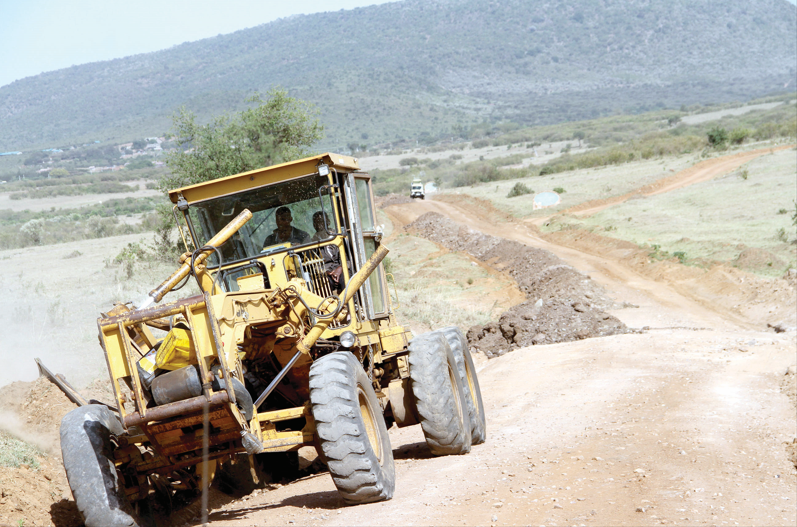Inside ambitious plan to give Masai Mara its lost glory

The Narok County Government has launched an ambitious programme aimed at regaining the lost glory of Maasai Mara National Game Reserve as one of the world’s tourist destinations.
The game reserve remains arguably one of the most picturesque and most famous wildlife sanctuaries on earth, having been voted as the eighth wonder of the world in 2007.
And for decades, the reserve has served as a source of foreign exchange, attracting over 500,000 tourists every year.
At a fee of Sh1,000 for an adult Kenyan and Sh300 for children for a 24-hour stay within the reserve, Narok county has been raking in Sh3 billion annually in revenue collection
The reserve attracts hundreds of thousands of tourists every year due to its wildlife, the Maasai people and their culture as well as the safari experiences.
Consequently, the Narok County Government is now determined to protect the role the reserve plays in the greater Mara ecosystem for posterity of tourism.
Narok County governor Patrick ole Ntutu has launched a project that will oversee the rebirth of the reserve as world ‘premier holiday destination’.
Top on the governor’s plan is to diversify the services offered by the game reserve to avoid the irregular trend where visitors jam the joint during the wildebeest migration high season — between June and September with hotels recording 100 per cent bookings, before the visitors dwindle to during the low seasons in January-March to the extent of forcing some facilities to close down.
Ntutu says that in a bid to improve efficiency in delivery of service, his administration will put all operations in the park under a new management, the Masai Mara management plan that would incorporate internationally accepted best practices in conservation.
According to the governor, the main objective of the plan is to ensure conservation of the reserve’s significance in global biodiversity, maintain the role of the reserve as the flagship of Kenya’s tourism industry as well as improve on a sustainable basis, the revenues generated by the park to support community livelihoods.
The new masterplan, Ntutu says, will also provide a practical management framework to support managers in the reserve undertake their day-to- day management responsibilities.
Ntutu says the county has also introduced strict measures to be adopted to protect wildlife, improve road network inside the reserve.
The measures also include introduction of modern technology skills and issuance of weapons to Narok Police Reservists (NPR) guarding the park.
Enhancing security
Last month, the governor hosted Interior PS Raymond Omollo at the Keekorok Lodge during the launch of 592 NPR officers in a move aimed at enhancing security coverage of the reserve.
The governor disclosed that gravelling of main roads inside the reserve is underway and their labelling to guide visitors to their right destinations.
The county has also embarked on improvement of the six airstrips in the park, to enable bigger local flights operate between the reserve and Nairobi, making it easier for tourists to access the hotels by air.
Apart from the Angama Airport at the Oloololo escarpment which is under construction, the Mara has Keekorok, Serena, Ol Kiombo, Musiara, Ngerende and Siana Conservancy airstrips where more than 20 aircrafts land daily.
The completion of the 86km Narok-Sekenani road has ended the agony tourists and drivers endured to get to the world-famous reserve. The road has been critical in the promotion of the Mara as a tourist destination over the last four years since its completion.
“For the tourists coming on road, their travel is already catered for after upgrading the 84km road from Narok to Sekenani gate to bitumen standard. The improvement has increased domestic tourism, as we now embark on the upgrade of all roads inside the parks to end off-road driving,” added the governor during an interview with a local vernacular language.
Chief Park Warden Stephen Minis says Ntutu’s administration has already re-issued a set of rules to tourist guides that must be adhered during game drives.
New guidelines
The new rules require that vehicles must be kept at least 25m (82ft) away from cat species and drivers must not form a circle of cars around the animals who are known to have instincts to assess their surroundings for potential danger.
Minis warns that if tour guides continued to put pressure on animals by overcrowding around them, the animals may become harder to find.
The rebirth of Mara Game Reserve under governor Ntutu’s administration comes days after a local carrier Silverstone Air, introduced daily flights between Nairobi and the reserve, raising competition for customers on the route already served by Fly-Sax, Safarilink, AirKenya and Blue Sky. Silverstone airline was until last October operating as a charter carrier.
The new measures come amid concerns of congestion of tourists and safari vehicles in parks and reserves such as Masai Mara, particularly during the great wildebeest migration season, threatening wildlife,
As part the long term measures to sell the Mara to the world as a premier destination for holiday makers and filmmakers, the governor alongside his Kajiado and Samburu counterparts Joseph ole Lenku and Jonathan Lati Leleliit respectively, has announced an annual Maasai cultural week that will be rotationally held in the three counties as a drawcard.
“Introduction of the cultural week is one of the ways meant to entice tourists to stay longer than the average two to three days that they traditionally do. The move will also help create a tourist’s circuit between the three counties in addition to the iconic wildebeest migration dubbed the eighth wonder of the world, ” Ntutu said.
“Though the wildebeest migration in the Mara is iconic, Maasai culture is just as spectacular, and would attract an equal number of international tourists to this destination, like the annual camel derby in Samburu” added governor Ntutu.
Ntutu says his administration is also seeking to promote local tourism, which has been on an upward trajectory countrywide by encouraging Kenyan travellers to watch wildebeest migrations alongside their international counterparts.









